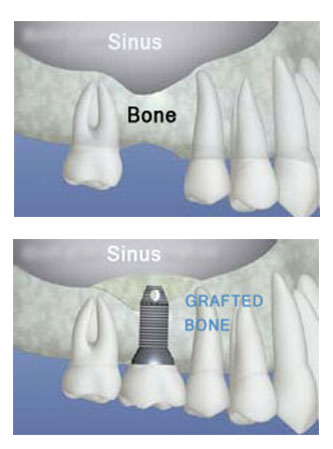Sinus Augmentation
For optimal results and longevity, dental implants require sufficient quality and quantity of bone and tissue within the jaw. In the mouth, there may be naturally occurring, diseased, or deformed areas that require bone and tissue grafts before implants can be placed.
The maxillary sinus is a hollow, air-filled space located directly above the back upper jawbone (maxilla). The proximity of the maxillary sinus to the upper back jawbone can create an insufficient amount of alveolar bone and require the placement of a dental implant to replace premolar and molar teeth.
In addition, if an upper molar or premolar is lost, the edge of the sinus cavity can shift and intrude on the jawbone, which further reduces the area suitable for implants. Bone resorption caused by tooth loss can make the posterior maxilla severely compromised.
A sinus augmentation, or sinus “lift,” is a procedure to help prepare the posterior maxilla for successful implant treatment by increasing the alveolar bone height. This is accomplished by raising the floor of the sinus. Room is thus created for placement of bone graft material to allow new bone to form.
After a period of time, implants can be set into the newly grafted maxillary bone. The end result of this procedure is an improved survival rate, which allows for long-lasting implants that improve both the aesthetic aspect and functionality of your mouth.

